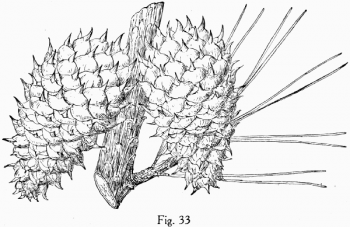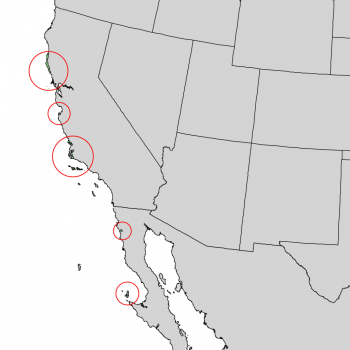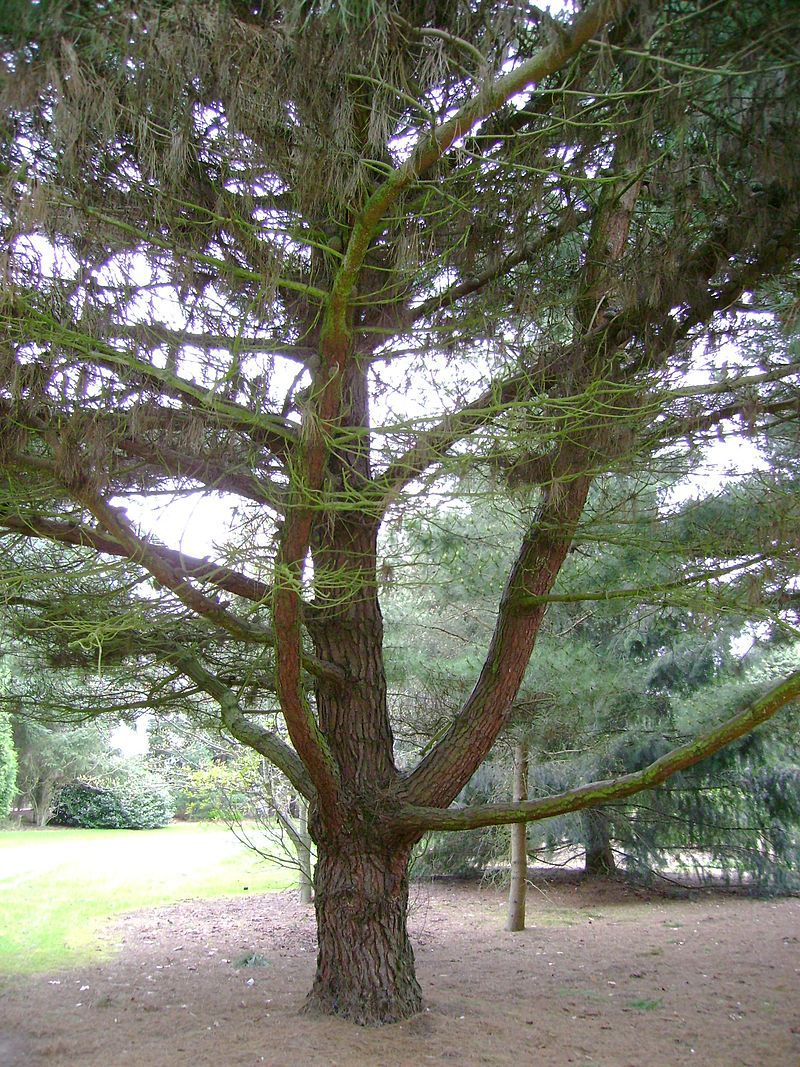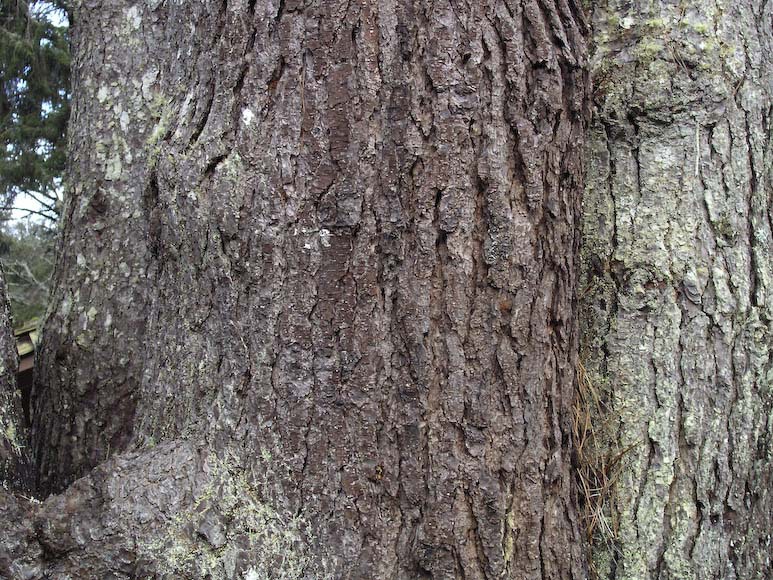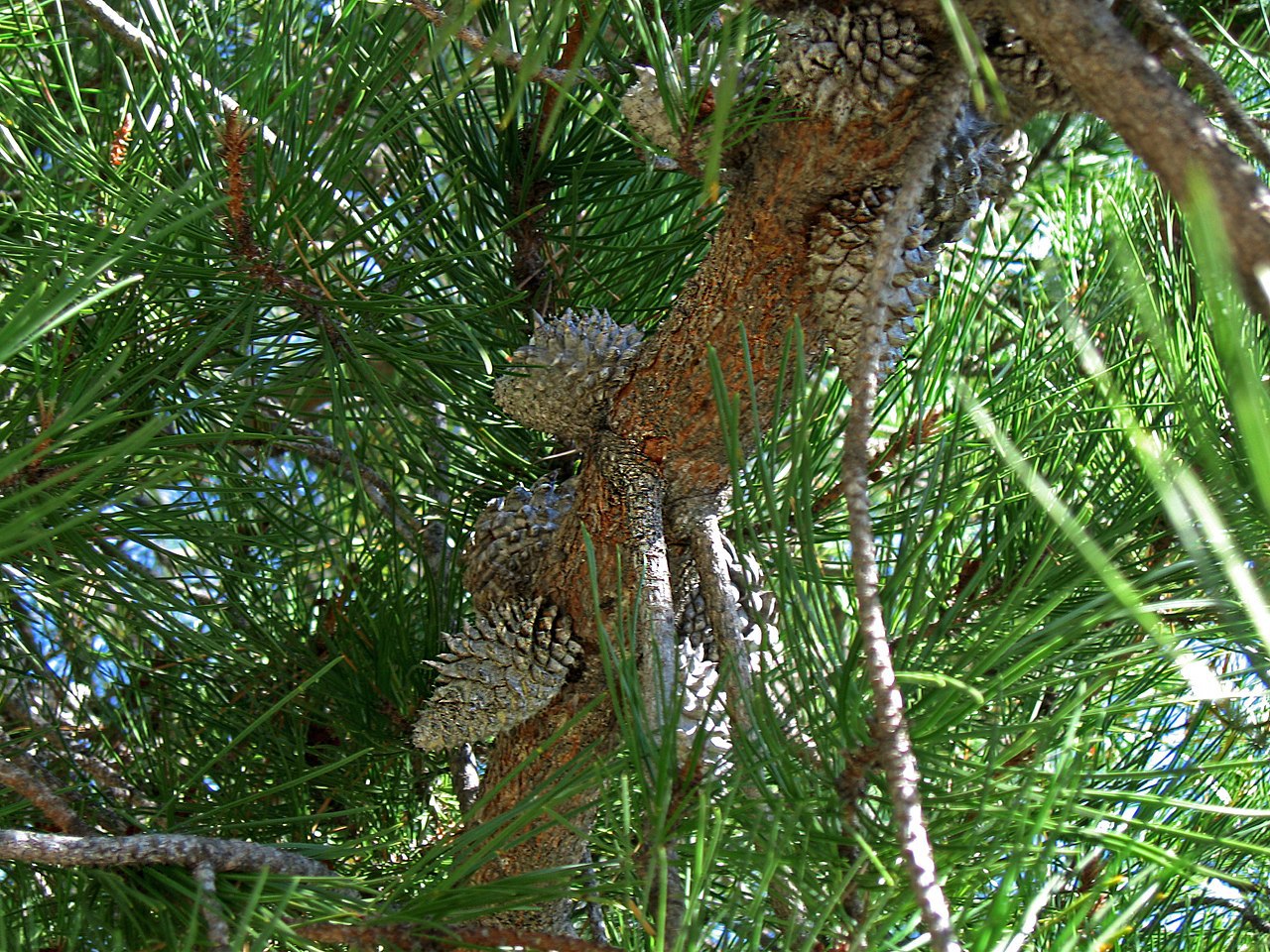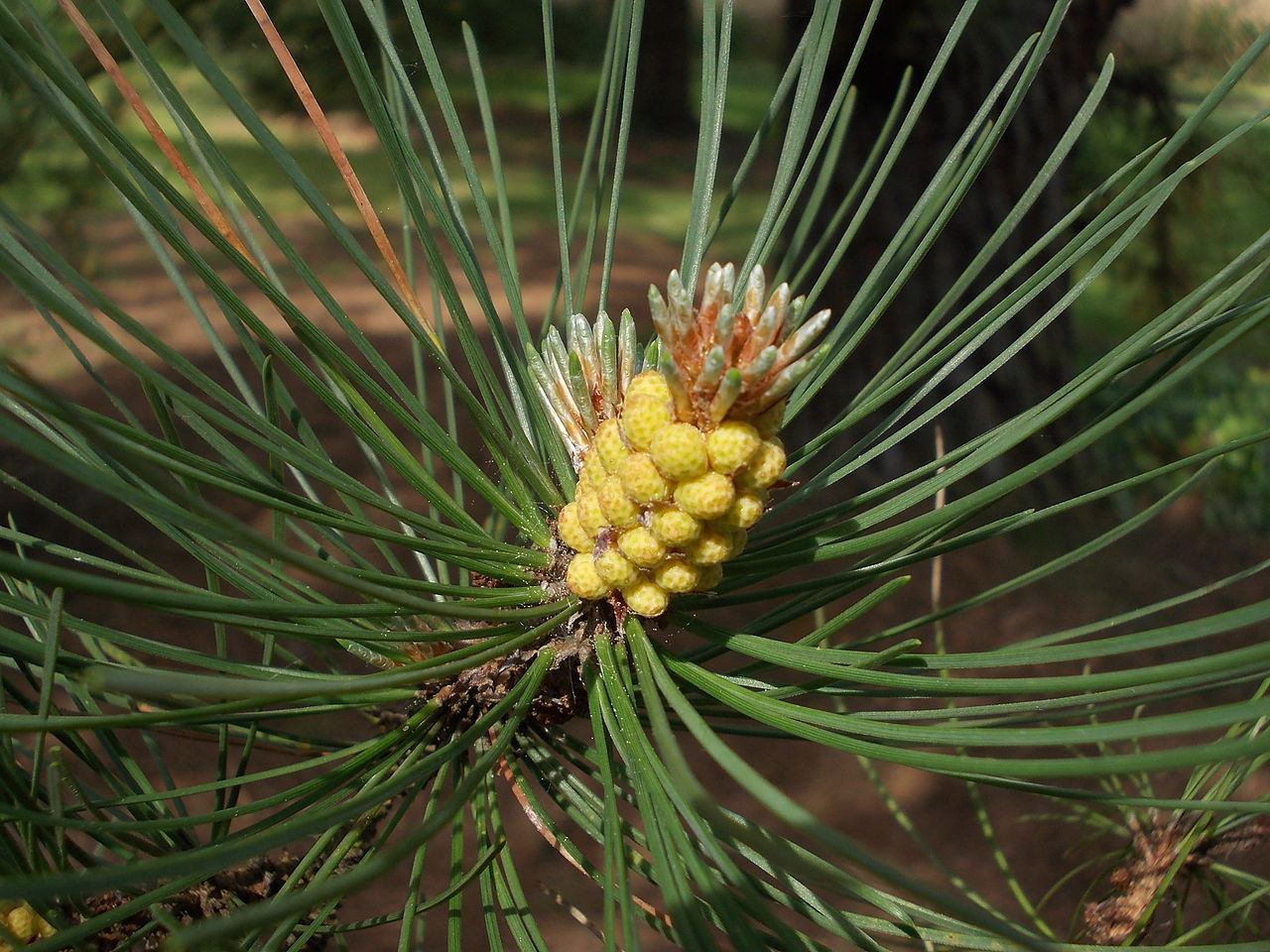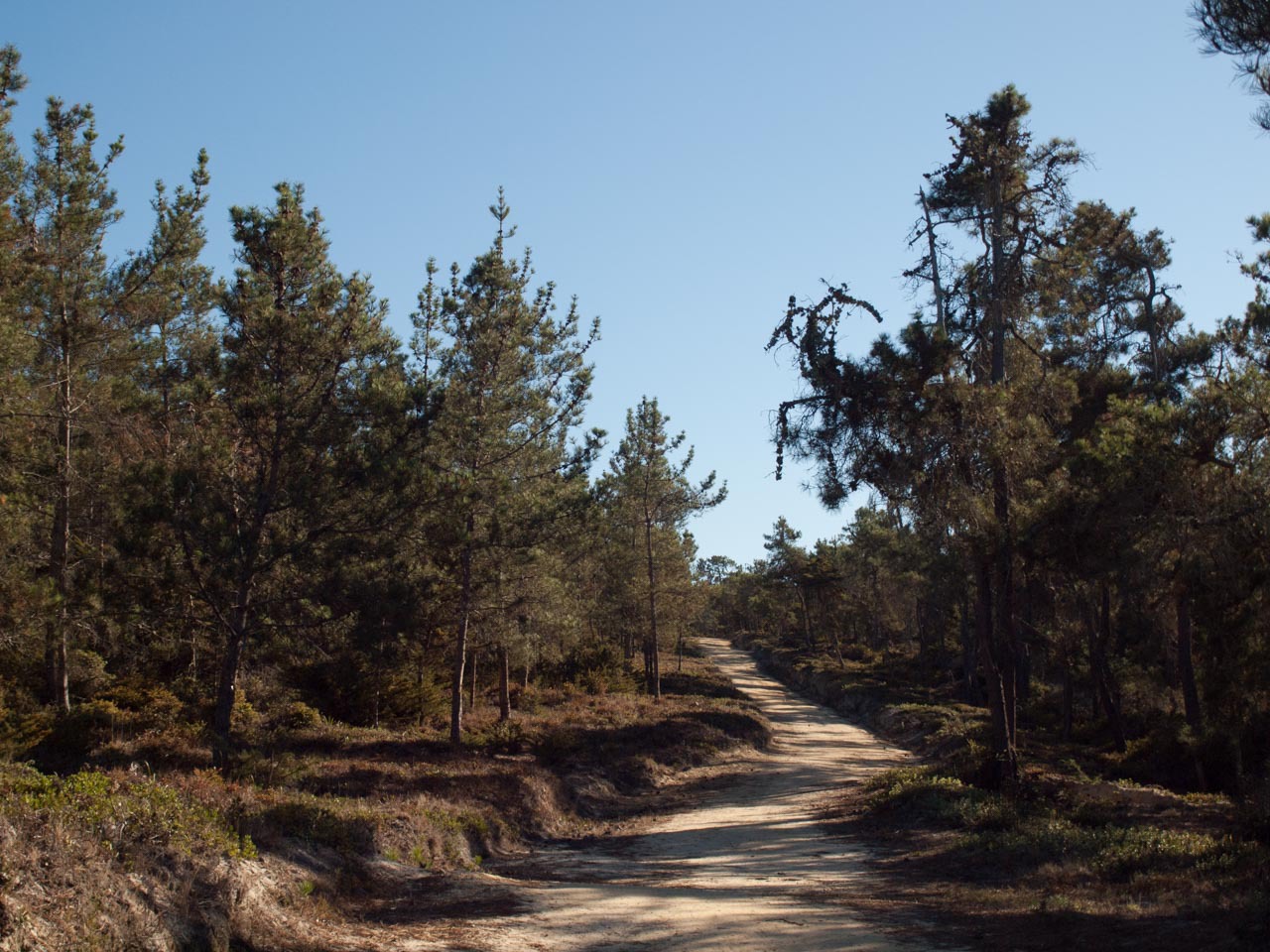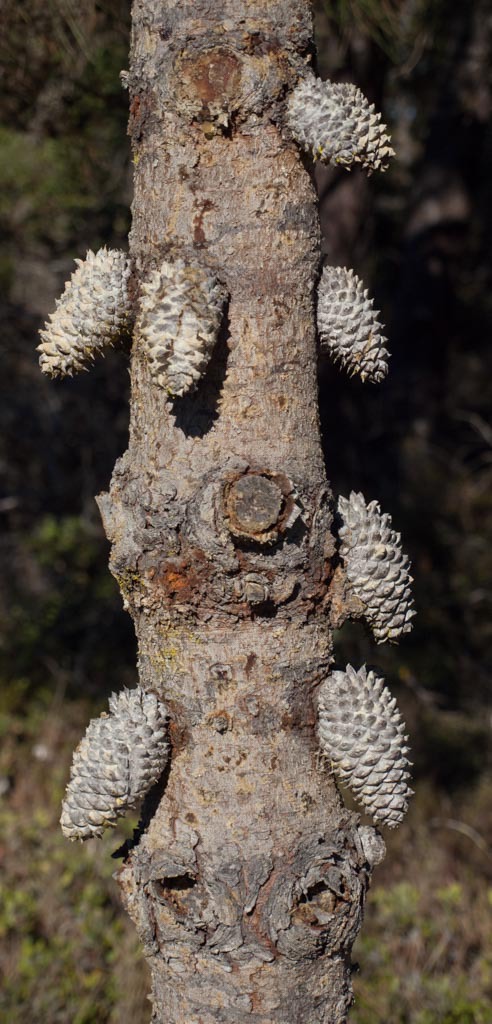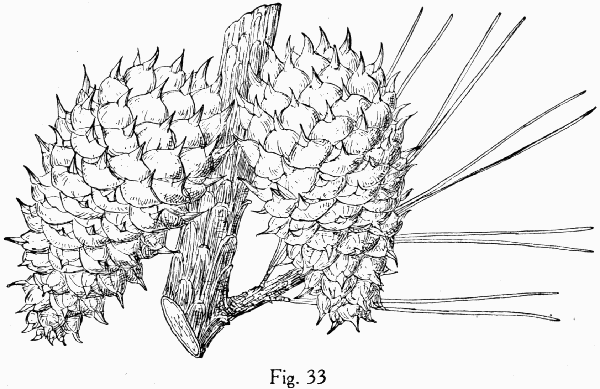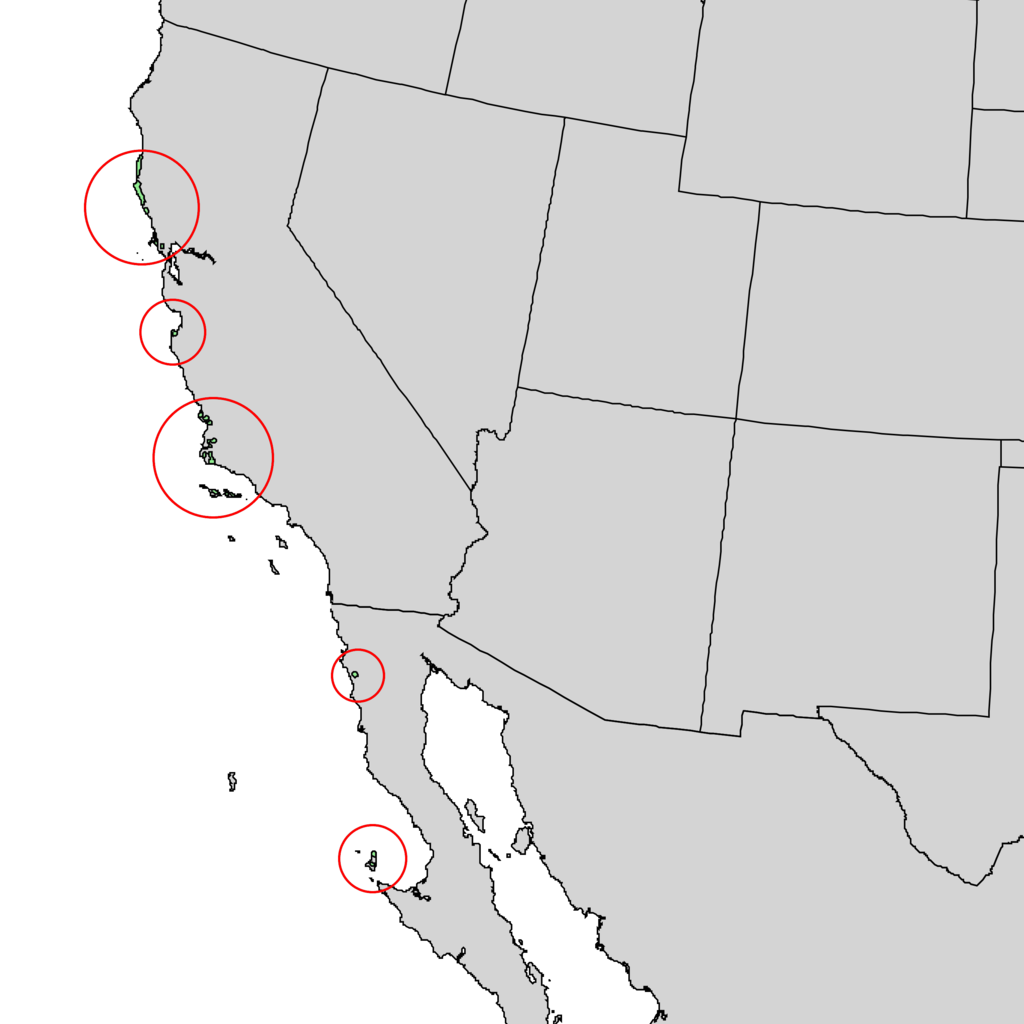subgenus Pinus, section Trifoliae (Duhamel), subsection Attenuatae (Van Der Burgh).
Pinus muricata, first described in 1836 by David Don (1799-1841), is commonly known as Bishop, obispo, pricklecone, dwarf marine, umbrella, bull, pitch, or Santa Cruz Island pine. Older texts call it "obispo" because it was described from near San Luis Obispo; English speakers corrupted that to "bishop," the English translation of "obispo." The species name is derived from the Latin term, "muricatus," meaning, "rough with hard points," describing this pine's prickly seed cones.
The species was discovered in 1835 by a young Irish botanist named Thomas Coulter, memorialized by another species he collected that year, Pinus coulteri. He collected it near Mission San Luis Obispo, thus the name "Bishop" pine.
Description. Bishop pine is an evergreen, coniferous species of tree that grows to mature heights of 80 feet (24 m); with a straight to contorted trunk up to 36 inches (90 cm) in diameter, measured at breast height; and a rounded, flattened, or irregular crown.
- Bark is dark gray in color, deeply furrowed into long, scaly-plated ridges.
- Branches grow spreading and ascending, often contorted.
- Shoots are slender to stout, orange-brown in color, aging darker brown, and rough in texture.
- Leaves (needles) are borne two per fascicle, growing spreading to upcurved, persisting 2 to 3 years on the tree. Individual needles measure 3.2 to 6 inches (8 - 15 cm) long by 0.06 inch (1.5) mm) thick, appear slightly twisted, colored dark yellow-green (glaucous Blue-green in northern populations). All needles surfaces bear lines of stomata, strongly serrulate margins, abruptly conic-acute apexes; and foliar sheaths up to 0.6 inch (1.5 cm) with a persistent base.
- Foliar buds are ovoid-cylindrically shaped, dark brown in color, 0.4 to 1 inch (1 - 2.5 cm) long, and resinous.
- Pollen cones are ellipsoid shaped, growing up to 0.2 inch (5 mm) long, and orange in color.
- Seed cones mature 2 years after pollination. They are serotinous, persisting for up to 70 years (or more; longer than any other pine on the tree. Old cones are often enveloped by the growing branch or trunk. Cones grow mostly in whorls, mostly asymmetric, lanceoloid-ovoid shaped before opening, curved-ovoid when open. Each measures 1.6 to 3.6 inches (4 - 9 cm) long, rich glossy chestnut-brown in color, sessile or on peduncles up to 0.08 to 0.16 inch (2 - 4 mm) long, mostly downcurved.
- Cone scales develop with a deep red-brown distal border (the sealing band, which is yellow-brown on fresh cones but darkening with age) on adaxial surface. Apophyses are usually much thickened, the abaxial ones progressively more angulately dome-shaped toward base of cone. Umbos are oriented centrally, with a stout-based, curved claw.
- Seeds are obliquely ellipsoid shaped with a 0.24 to 0.28 inch (6 - 7 mm) long body, and are dark brown to near black in color with an attached wing 0.6 to 0.8 inch (15 - 20 mm) long.
Distribution. This species is native to USA - California; and Mexico - Baja California Norte; at elevations from sea level to 1,000 feet (0 - 300 m). Occurs in scattered locales along the coast and offshore on Santa Cruz and Santa Rosa Islands of California, and Islas Cedros and Guadalupe in Baja. Habitats include dry ridges to coastal, windshorn forests, often in or around bogs or in other nutrient-poor soils. There is also a report of the species occurring in the Takenitch Lake area in southwestern Oregon.
Hardy to USDA Zone 8 - cold hardiness limit between 10° and 20°F (-12.1° and -6.7°C).
